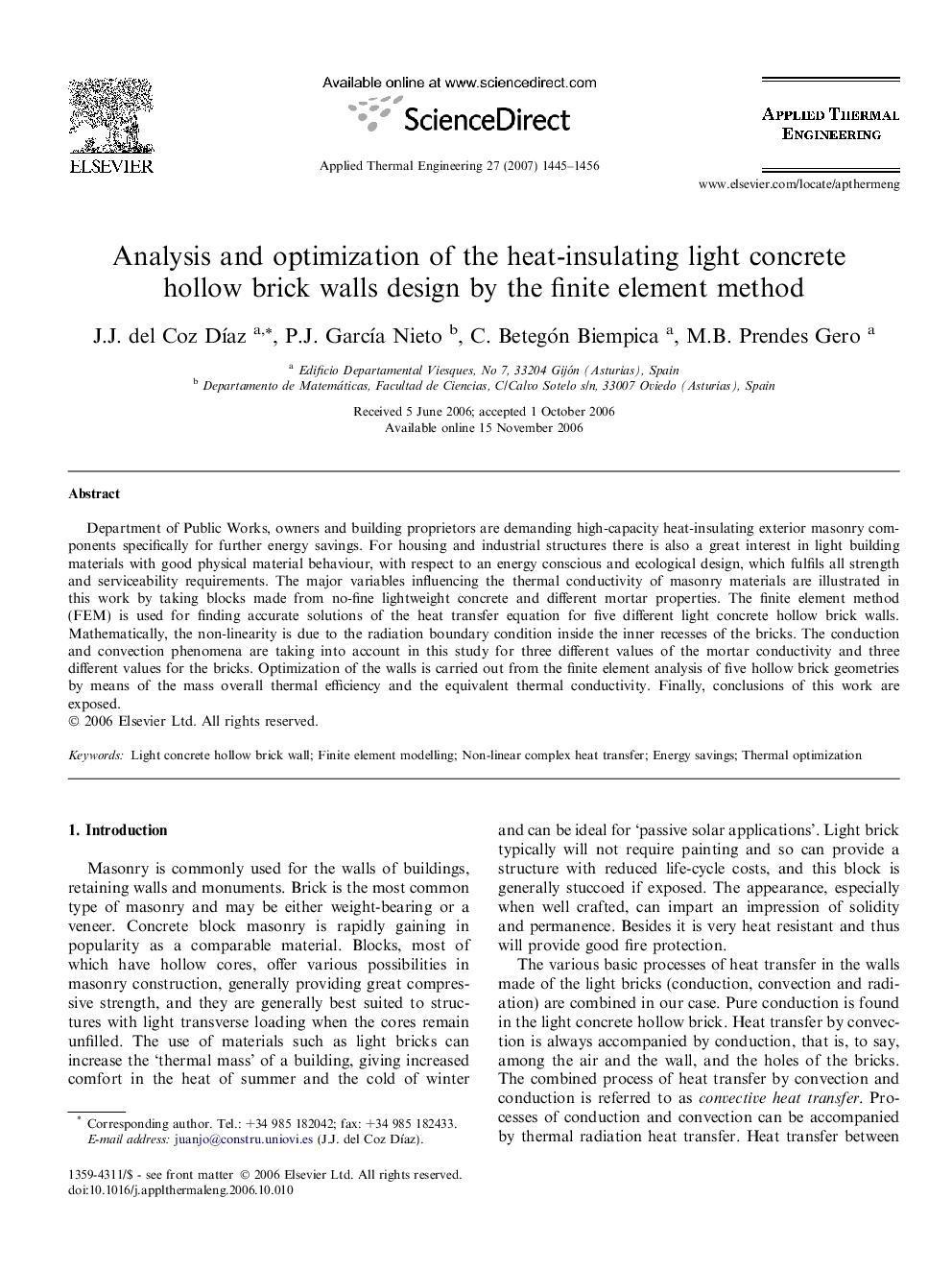| Article ID | Journal | Published Year | Pages | File Type |
|---|---|---|---|---|
| 649432 | Applied Thermal Engineering | 2007 | 12 Pages |
Department of Public Works, owners and building proprietors are demanding high-capacity heat-insulating exterior masonry components specifically for further energy savings. For housing and industrial structures there is also a great interest in light building materials with good physical material behaviour, with respect to an energy conscious and ecological design, which fulfils all strength and serviceability requirements. The major variables influencing the thermal conductivity of masonry materials are illustrated in this work by taking blocks made from no-fine lightweight concrete and different mortar properties. The finite element method (FEM) is used for finding accurate solutions of the heat transfer equation for five different light concrete hollow brick walls. Mathematically, the non-linearity is due to the radiation boundary condition inside the inner recesses of the bricks. The conduction and convection phenomena are taking into account in this study for three different values of the mortar conductivity and three different values for the bricks. Optimization of the walls is carried out from the finite element analysis of five hollow brick geometries by means of the mass overall thermal efficiency and the equivalent thermal conductivity. Finally, conclusions of this work are exposed.
